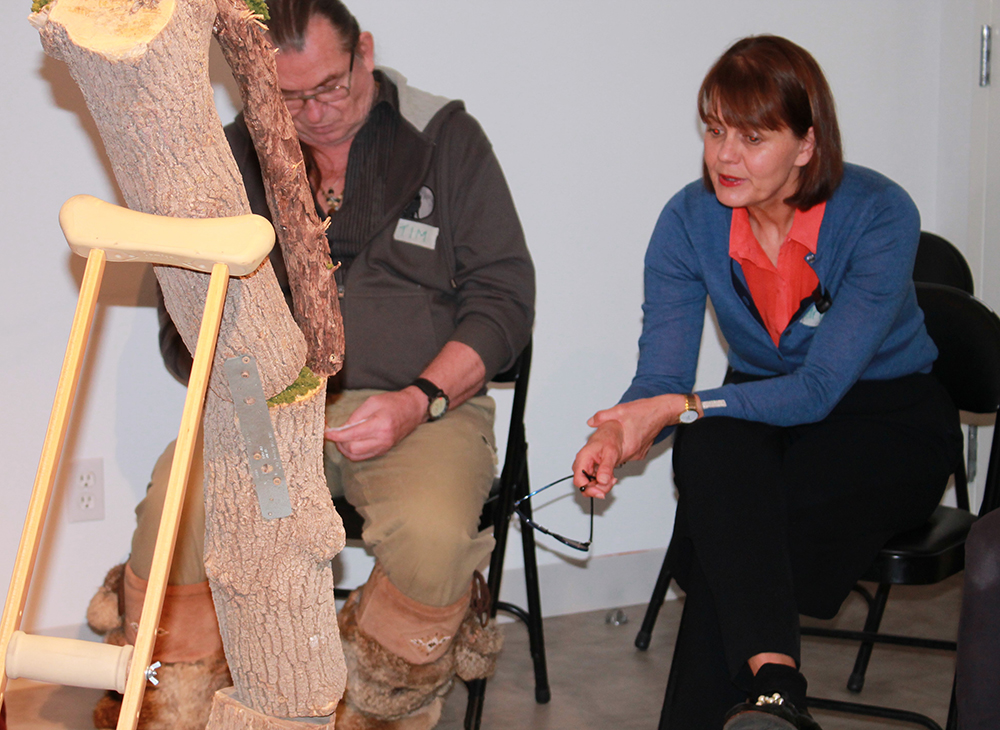The program producer of the National Gallery of Australia crouches down in front of a sculpture of a reassembled tree that has been hinged together with steel brackets and has a wooden crutch leaning against it.
She’s surrounded by members of the Art-Making for the Health of It! group.
Together, they discuss what Jocelyn Purdie’s art installation at the Agnes Jamieson Gallery in Minden means to them.
This week, Adriane Boag was a guest of Fay Wilkinson, a registered expressive arts consultant, educator, storyteller and artist who resides in Haliburton.
The Canberra resident also did a lunch and learn at the college; a talk at the Abbey Retreat Centre and a workshop at the Rails End Gallery during her stay.
She talked a lot during her visit about the Art and Dementia programs her gallery does; the supporting research around how it is helping people; programs for people in palliative care; those living with mental health challenges; children in hospital, and the NGA ArtMed program, a partnership with the Australian National University for medical students.
The theme of the week also leant itself to discussions about how similar programs could be developed in Haliburton County.
“She understands the rural context,” explained Wilkinson at the speakers’ series at the Abbey Retreat Centre Oct. 15. “There will be discussion about ‘how do we do this in our community’?”
“Take whatever you want and make it yours,” Boag added. “I’m very keen to work with Fay in this area.”
Boag has been sharing the gallery’s work around the world, at conferences in South Korea, New York, Italy, Japan and this fall in Montreal. She has also been the subject of a Tedtalk.
Wilkinson and Boag met last year when the Haliburton artist was invited to speak at a conference in Australia.
Boag said a dementia diagnosis can come with a lot of grief. She added there is a focus on what people can no longer do, versus what they can still do. She said the art and dementia program is about “going forward in an optimistic way.”
People with dementia come to the gallery with their carers to look at art, discuss and create. In some cases, the gallery comes to them via outreach.
Boag talked about a man named Chris, who had visited the gallery every two weeks for four years and told them, “I am leading the best life I ever have.”
She said test results have shown that over time the visits lower cortisol levels to more normal levels.
Commenting on the palliative program, in which they have brought people at end of life to the gallery to look at pieces, such as by Monet, she said it provides distraction and respite.





